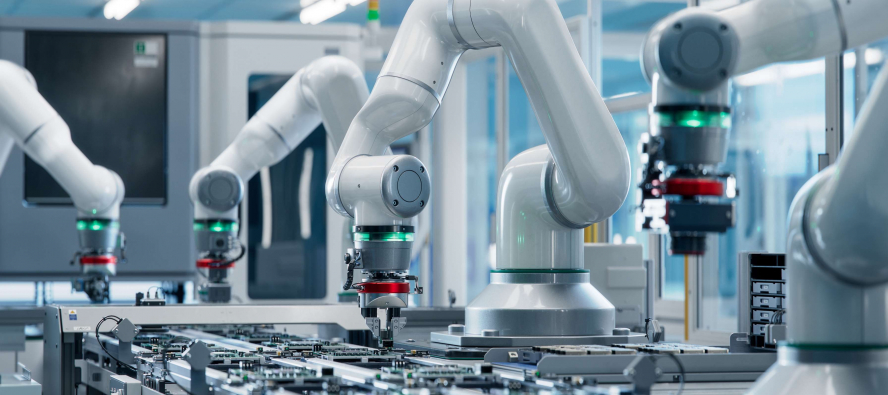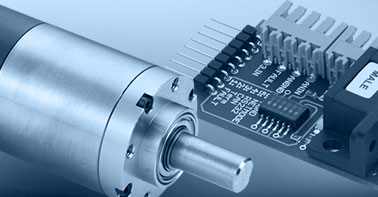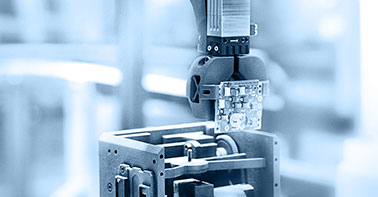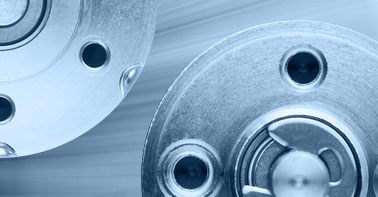- info@ems-ltd.com
- 0118 9817391
Home > PR > From mass production to mass personalisation
From mass production to mass personalisation
06/12/2023 - Drive systems to deliver cost-effective customisation
6th December 2023
Filed under:
Ems, Faulhaber, Manufacturing

It’s no secret that robotics and automation have been key drivers in achieving mass production. But as manufacturers seek to offer a wider variety of products able to fit individual customer needs, can automation bring personalisation to the same scale? Here, Dave Walsha, sales manager at DC motor supplier EMS, explores.
Industry 4.0 emphasizes interconnectedness with greater communication across the shop floor. Looking ahead to the next era of manufacturing, Industry 5.0 will be guided by three core principles: human-centricity, sustainability and resilience.
It’s easy to see the benefits of a human-centric approach. A greater emphasis on recognising individuals allows for the creation of more tailored products; offering a competitive and technical advantage, alongside improved customer relations. Consider the MedTech industry as an example. Perfectly customised implants could drastically improve patient comfort and experience, while custom insoles could help to regulate body movement and prevent joint damage.
But realising the concept of human-centricity within the traditionally strict constraints of mass production remains a challenge. How can we effectively bring a custom approach to the masses, all at a reasonable cost?
The path to personalisation
Fortunately, there are a few different routes to achieving mass personalisation, starting with the initial design. Traditionally, it was preferred to push personalisation steps to as far back in the production process as possible, leaving the differentiating until last. But this no longer needs to be the case.
Beginning with a modular product design, for example, allows customers flexibility to swap individual components within a product to fit them. While this doesn’t allow for complete customisation, it’s a cost-effective way of making a product more bespoke.
Another option is to make greater use of 3D design tools. Typically, these tools require specialist engineers and skills that are short in supply. But as technology continues to advance, we’re likely to see more streamlined, user-friendly software develop that allows non-specialists to make minor adjustments to existing CAD templates for individual customers. It’s possible that AI could take this even further, making customisation viable even for individual customers.
So, how can you build a manufacturing plant that’s capable of both mass production and mass customisation?
Building custom goods
Any factory that produces on a mass scale will rely on some form of automation. But as we move from mass production to mass customisation, automation technology will need to evolve too. Traditional production lines are often very rigid, with machinery and equipment designed to perform a very specific set of tasks.
As a result, we’re likely to see investment into machinery that’s more flexible, easily programmable, and works effectively alongside human workers. Collaborative robots, or cobots, will play a vital role. Simple, repetitive tasks such as sanding or grinding can be performed by the cobot, leaving operators to provide individual finishing touches, whether it be a specific paint finish or a particular assembly.
The drive syytem within
Whether it’s driving a cobot’s gripper or the arm of a 3D prototyping printer, small electronic drive systems will continue to be a crucial element in most automation machinery. As a result, it’s vital that these systems are up to scratch.
Choosing a suitable electronic drive system typically begins with the DC motor. Responsible for creating the initial mechanical force, the motor is one of the most important components in the drive system. But with hundreds of motors available on the market, how can you identify exactly which one will fit your application?
Working with an experienced DC motor supplier can help. Whether it’s for a powered screwdriver or a conveyer belt transporting goods, a dedicated drive system supplier can specify each element of the system to suit. This includes advising on the best type of motor for each application, such as a stepper motor for a 3D printer, where high positioning accuracy is required. Ultimately, this consultative approach ensures a final solution that meets all requirements including power, required lifetime, torque, size and cost.
Industry demands are changing all the time. As we continue to strive for improvement and innovation, unlocking greater personalisation is likely to be of increasing importance. With investment into the right technology, and a high-power electronic drive system at its core, manufacturers can develop resilient plants that can effectively produce at a mass scale, while keeping each individual end user in mind.
- Categories / Tags
- 1024...SR
- AEMT
- AESL
- Acceleration
- Agriculture
- Agritech
- Autoclave
- BHS
- BHT
- BHx
- BLDC
- BP4
- BRC Series
- BX4
- BXT
- BeBionic
- Bearings
- Bespoke
- Brushed
- Brushed DC Motors
- Brushless
- Brushless DC Motor
- Brushless DC Motors
- Brushless Dc Motors
- Brushless Motor
- Buhler
- Building Automation
- COVID
- CXR
- Catalogue
- Company Update
- Controller
- Coreless
- Coventry
- Custom
- Custom Design
- Custom Drive Design
- DC Motor
- DC Motor Supplier
- DMN
- Dc Motor
- Design
- Dimatech
- Drones
- EDS
- EMS
- EMS News
- EV
- Encoder
- Ewellix
- Exoskeleton
- Expo
- FAULHABER
- Factory
- Faulhaber
- Flat
- GPT
- Galil
- Gearhead
- IEF3
- IMC
- Industry 4.0
- Industry 4.0. Blog
- Inspection
- KAG
- LL06
- LM
- LVC
- Laboratory Automation
- Linear
- Linear Actuator
- Logistics
- M50
- M80
- MC3
- Maintenance
- Manufacturing
- Mechatronics
- MedTech
- Medical
- Medical Devices
- Medical Imaging
- Medtech
- Merkel
- Motion Control
- Motor
- Motor Supplier
- Neurosurgery
- New
- Nidec
- Nidec Servo
- Optical
- Pain Relief
- Piezo
- Piezomotor
- Pipeline
- Planetary
- Planetary Gearheads
- Point Of Care
- Precision
- Precistep
- Process
- Production
- Quickshaft
- Robot
- Robotics
- Robots
- SKF
- SR Series
- Samples
- Servomotors
- Small DC Motor
- Software
- Space
- Sponsorship
- Stepper
- Stepper Motor
- Stepper Motors
- TMS
- Testing
- Trade Show
- 1016
- 1660
- 1935
- 2017
- 2018
- 2020
- 2021



